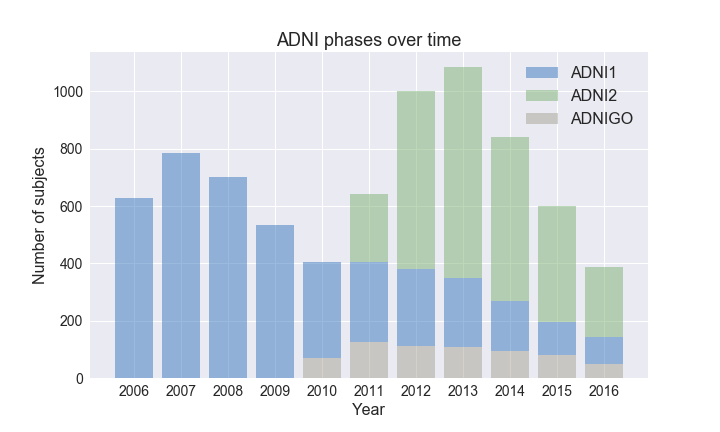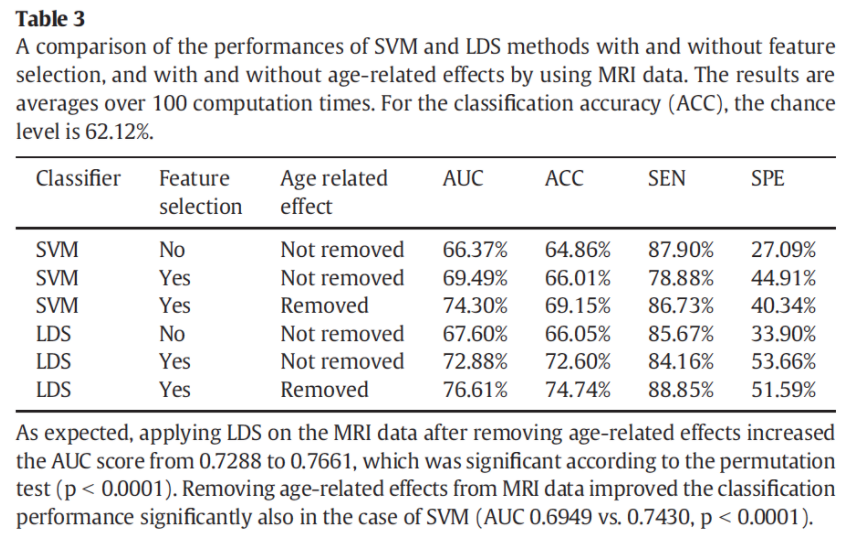Introduction
CS209a Fall 2017, Harvard University
Group 32
Ben Anandappa, Bernard Kleynhans, Justin Lee, Filip Michalsky
Contents
Project Statement
The principal goal of the project is to determine the importance of various biomarkers in discriminating between the different stages of Alzheimer’s disease (AD). Different classification models will be considered to distinguish between Cognitively Normal (CN) subjects and subjects diagnosed with a degree of cognitive impairment (MCI - Mildly Cognitively Impaired; AD - Alzheimer’s Disease). The prediction accuracy uplift provided by different biomarker features relative to a base model will be considered in constructing a model that balances predictive power and the cost of specific features. The analysis will not include an extensive cost analysis, but the framework will then allow the assumed costs to be modified based on input from relevant experts.
Building on this, a secondary project goal will be to determine the relative importance of individual ADAS questions in diagnosing Alzheimer’s disease. We expect to see differences in the statistical significance of different questions. A data-driven analysis of the questions and possible interactions could assist in the design of future tests.
Background on ADNI
Data description
The data that will be used for this project is from the Alzheimer’s Disease Neuroimaging Initiative (ADNI) database (http://adni.loni.usc.edu/). The ADNI study consists of three phases: ADNI1, ADNI GO, and ADNI2. The first phase, ADNI1, commenced in 2004 and included 400 subjects diagnosed with MCI, 200 subjects with early AD and 200 elderly Cognitively Normal (CN) subjects. The data used for this work will be limited to the first phase.

Literature review
Alzheimer’s disease stages
No single clinical test can be used to identify Alzheimer’s disease. A comprehensive evaluation includes a complete health history, physical examination, neurological and mental status assessments, analysis of blood, and possibly magnetic or nuclear imaging exams. While this type of evaluation may provide an accurate diagnosis of probable Alzheimer’s disease, absolute confirmation requires examination of brain tissue at autopsy.
ADNI1 assessed participants in the following stages of the disease. The baseline diagnosis assigned to subjects by medical experts will be used as the primary response.
| CN | Normal Aging / Cognitively Normal | Control subjects in the study, showing no signs of depression, mild cognitive impairment or dementia | ~230 subjects | |
| MCI | Mild Cognitive Impairment | MCI subjects have a reported memory concern. There are no significant levels of of impairment in other cognitive domains. | ~400 subjects | |
| AD | Alzheimer’s disease | AD subjects must have been evaluated to meet the NINCDS/ADRDA criteria for probable AD | ~190 subjects |
Description of biomarkers
ADNI researchers collect several types of data from subjects throughout the study. The data collected that is most relevant to this work is outlined below:
- Cognitive tests: Neuropsychological tests conducted by clinical experts to assess general cognition, memory and language. Measure cognitive decline in a direct and quantifiable manner.
- Risk factors: Certain factors have been found to be correlated with higher risk of developing Alzheimer’s, e.g. age (older subjects), gender (women at higher risk), and certain genetic markers (e.g. APOE4).
- CSF measures: Biochemical analysis of cerebrospinal fluid (CSF) provides valuable information as abnormal concentrations of amyloid-beta and tau proteins are strong indicators of Alzheimer’s disease.
- MRI measures: Cognitive decline can be quantified by measuring the volume of gray matter and white matter of the brain via Magnetic resonance imaging (MRI). Brain Atrophy can be indicated by the loss of volume in particular regions of the brain.
- PET measures: Positron Emission Tomography (PET) is a nuclear medicine technique for tracking concentrations of specific proteins in the brain, such as Fluorodeoxyglucose (FDG), associated with cell metabolism and an indicator of neurodegeneration. AV45-PET measures abnormal proteins such as amyloid-beta, one potential cause of Alzheimer’s.
Review of relevant papers
Several scientific papers were reviewed to get some insights on what methods have been used in the past:
-
Multimodal classification of Alzheimer’s disease and mild cognitive impairment (Daoqiang Zhang, Yaping Wang, Luping Zhou,Hong Yuana Dinggang Shena, the Alzheimer’s Disease Neuroimaging Initiative). link
-
Propose to combine three modalities of biomarkers, i.e., MRI, FDG-PET, and CSF biomarkers, to discriminate between AD (or MCI) and healthy controls, using a kernel combination method and SVM (10-cv). Achieved accuracy 93.2%.
- The increased CSF total tau (t-tau) and tau hyperphosphorylated at threonine 181 (p-tau) are related to the neurofibrillary tangle pathology
- The decreased amyloid β (Aβ42) indicates amyloid plaque pathology, and
- The presence of the apolipoprotein E (APOE) ε4 allele can predict cognitive decline or conversion to AD.
-
-
Random forest-based similarity measures for multi-modal classification of Alzheimer’s disease Gray KR, Aljabar P, Heckemann RA, Hammers A, Rueckert D; Alzheimer’s Disease Neuroimaging Initiative. link
- Achieved classification accuracies of 89% between Alzheimer’s disease patients and healthy controls, and 75% between mild cognitive impairment patients and healthy controls.
-
Machine learning framework for earlyMRI-based Alzheimer’s conversion prediction in MCI subjects Elaheh Moradi a, Antonietta Pepe b, Christian Gaser c, Heikki Huttunena, Jussi Tohka for the Alzheimer’s Disease Neuroimaging Initiative. link
-
This study purposely avoided using CSF or PET based biomarkers, the former because it requires lumbar puncture, which is invasive and potentially painful for the patient, and the latter because of its limited availability compared to MRI, as well as its cost and radiation exposure.
-
The review of performed classification methods, and their accuracies from this study, are summarized below.
-
